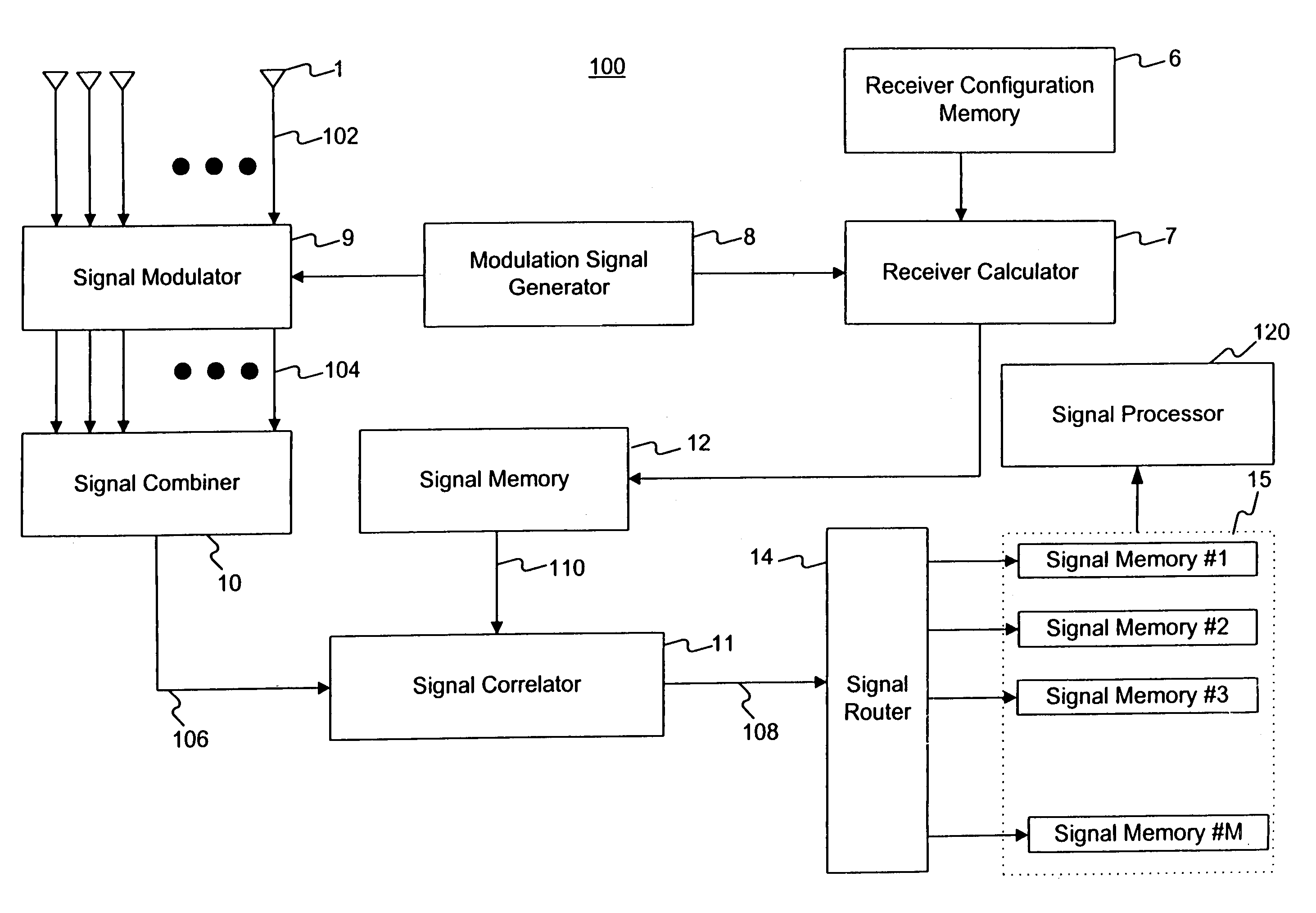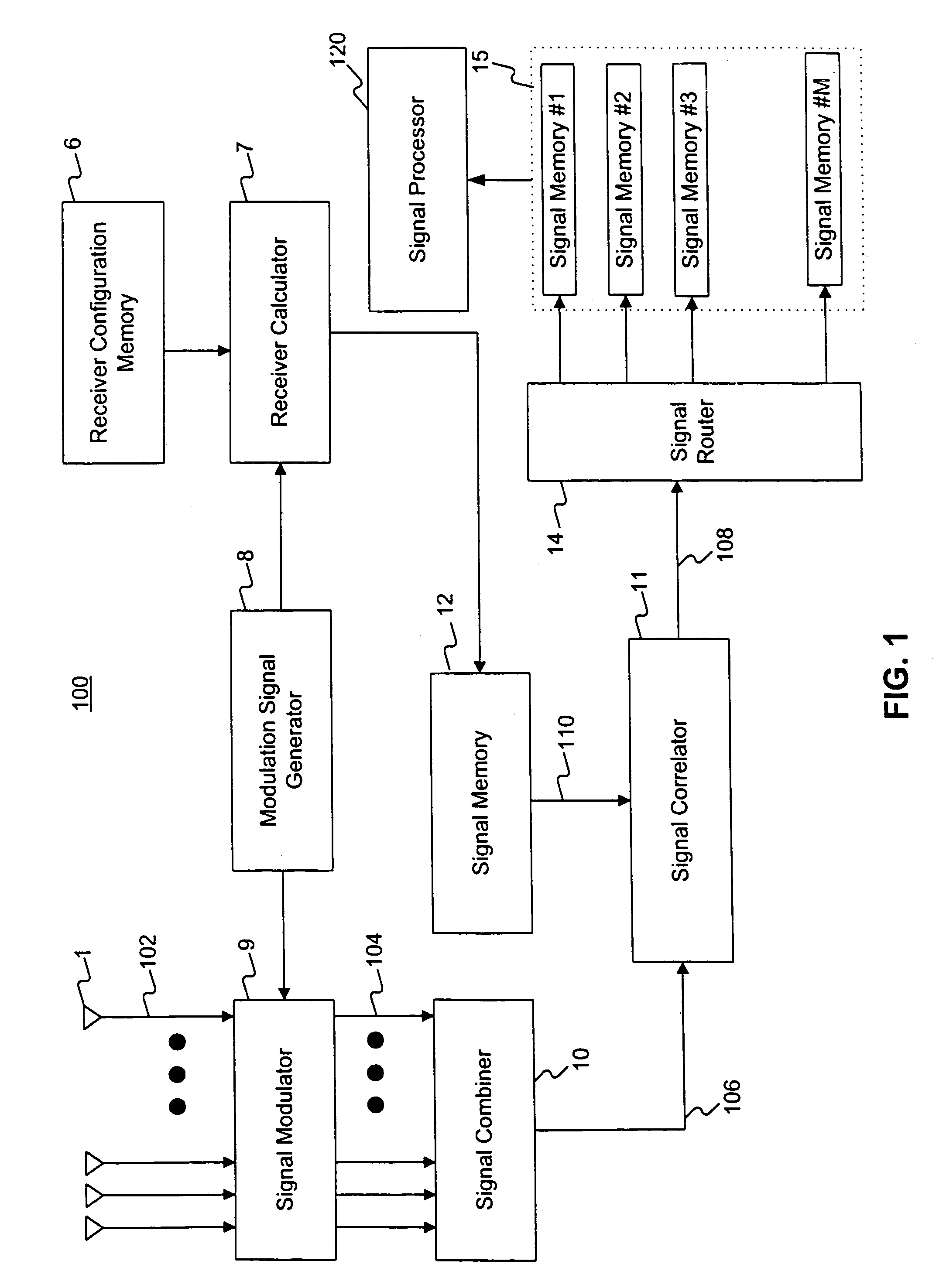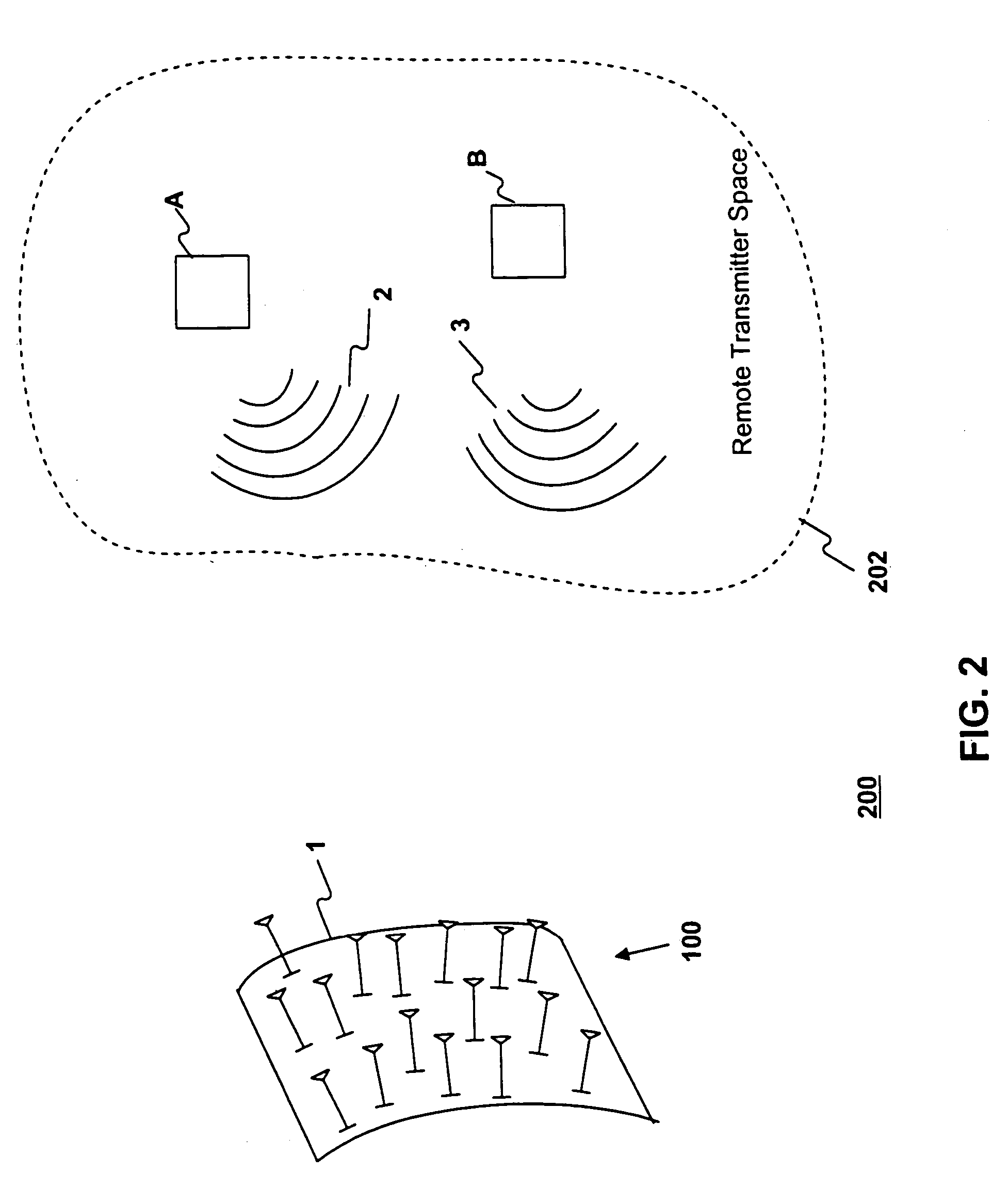Method and apparatus for space division multiple access receiver
a technology of space division and multiple access, applied in the field of wireless communication networks, can solve the problems of system capacity, complicated sdma receiver, and limited frequency spectrum of communication systems
- Summary
- Abstract
- Description
- Claims
- Application Information
AI Technical Summary
Benefits of technology
Problems solved by technology
Method used
Image
Examples
Embodiment Construction
Overview
[0023]The following description of embodiments of the present invention refers to the accompanying drawings. Where appropriate, the same reference numbers in different drawings refer to the same or similar elements.
[0024]Methods and systems consistent with this invention overcome the hardware and software complexity of the conventional SDMA receiver in a wireless system. Such methods and systems comprise a receive element array with a plurality of receive elements. Users of the wireless system transmit a plurality of signals, each signal having a different direction or spatial location relative to the receive element array. The users may be, for instance, mobile telephone users.
[0025]The receive element array receives the plurality of transmitted signals in the plurality of receive elements to form a plurality of receive element signals. Such methods and systems form a single combined signal derived from the plurality of receive element signals, and may detect each of the pl...
PUM
 Login to View More
Login to View More Abstract
Description
Claims
Application Information
 Login to View More
Login to View More - R&D
- Intellectual Property
- Life Sciences
- Materials
- Tech Scout
- Unparalleled Data Quality
- Higher Quality Content
- 60% Fewer Hallucinations
Browse by: Latest US Patents, China's latest patents, Technical Efficacy Thesaurus, Application Domain, Technology Topic, Popular Technical Reports.
© 2025 PatSnap. All rights reserved.Legal|Privacy policy|Modern Slavery Act Transparency Statement|Sitemap|About US| Contact US: help@patsnap.com



